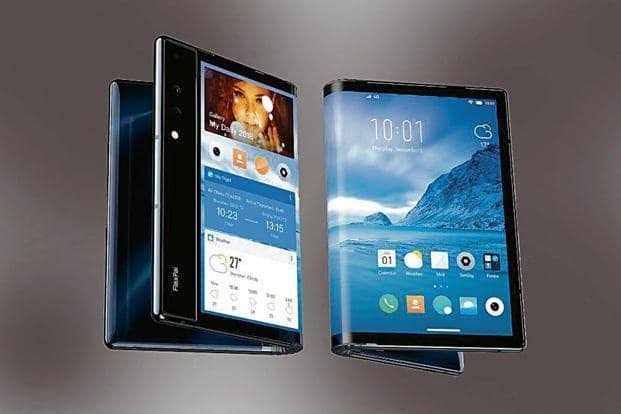Explore the transformative impact of foldable and flexible displays on smartphones. Discover how these technologies enhance screen size, multitasking, and design innovation, while also addressing durability, software, and cost challenges.
The evolution of smartphone technology has been marked by significant innovations with foldable and flexible displays representing some of most exciting advancements. These technologies promise to transform user interaction with smartphones. By offering new design possibilities. And enhanced functionality. This article explores how foldable and flexible displays are reshaping future of smartphones.
Understanding Foldable and Flexible Displays
Foldable Displays
Foldable displays are designed to bend and fold. Allowing smartphones to switch between different forms and sizes. Typically made from OLED (Organic Light Emitting Diode) technology which is inherently flexible. These displays feature layers that fold along hinge or crease. This design enables device to open and close like book or clamshell. Offering compact form factor that expands into larger screen when needed.
Flexible Displays
Unlike foldable displays flexible displays can bend and curve without needing to fold. These displays are used in devices that may wrap around or feature curved surfaces. Providing a seamless and continuous screen experience. Flexible nature of these displays allows for innovative design applications and user interactions.
The Benefits of Foldable and Flexible Displays
Increased Screen Size in a Compact Form
One of the major advantages of foldable displays is their ability to offer a larger screen area while maintaining a compact size. Users can enjoy a tablet-sized display for tasks such as browsing or watching videos but fold the device to fit comfortably in a pocket or bag. This flexibility enhances the user experience by combining portability with an expanded viewing area.
Enhanced Multitasking Capabilities
Foldable smartphones support advanced multitasking by allowing multiple applications to run simultaneously on different sections of the screen. For example, users can have a video call on one side of the screen while browsing the web or taking notes on the other. This increased screen space facilitates more efficient and productive use of the device.
Innovative Design Possibilities
Flexible displays enable unique design innovations that were previously unattainable with traditional rigid screens. Devices with curved or wraparound displays offer immersive experiences and aesthetic appeal. For instance, a smartphone with a wraparound screen can display notifications or other information along the device's edges, providing an engaging and accessible user interface.
Applications of Foldable and Flexible Displays
Productivity Enhancements
In the realm of productivity, foldable devices can function as versatile work tools. A foldable smartphone may serve as a portable office with a full-sized screen for document editing, email management, and presentations. The ability to utilize multiple applications concurrently on a large screen streamlines workflows and improves efficiency.
Wearable Technology
Flexible displays have potential applications in wearable technology. For example, smartwatches with flexible displays can wrap around the wrist more comfortably, providing a larger screen area without sacrificing ergonomics. Flexible displays may also be used in augmented reality (AR) and virtual reality (VR) headsets to offer immersive visual experiences.
Consumer Electronics Innovations
The consumer electronics market is experiencing significant innovation due to foldable and flexible displays. Manufacturers are experimenting with devices that can transform into tablets, laptops, or portable gaming consoles when unfolded. These advancements lead to new product categories that cater to diverse user needs and preferences.
Challenges and Considerations
Durability Concerns
Despite the advantages, foldable and flexible displays face durability challenges. The folding mechanism and display itself are subject to wear and tear over time. Ensuring the long-term reliability and robustness of these components is essential for consumer acceptance and widespread adoption.
Software Optimization
Developing software that seamlessly adapts to different screen configurations is a critical challenge. Applications and operating systems must be optimized for the dynamic nature of foldable and flexible displays, including handling screen transitions, multitasking, and maintaining a consistent user experience.
Cost of Production
The production of foldable and flexible displays involves advanced materials and manufacturing processes, which can result in higher costs compared to traditional screens. As the technology matures and production scales up, the costs are expected to decrease, making these devices more accessible to a broader audience.
Future Prospects and Innovations
Advances in Materials Science
The future of foldable and flexible displays is promising, with ongoing research driving advancements in materials science. Development of more durable and flexible substrates is expected to enhance the performance and longevity of these displays.
Improvements in Hinge Technology
Innovations in hinge technology and foldable mechanisms will address current durability concerns. New designs and materials are being explored to create more resilient and reliable foldable devices, improving overall user experience.
Software Development
The evolution of software will play a crucial role in shaping the future of foldable and flexible smartphones. Enhancements in user interface design and application compatibility will maximize the benefits of these displays. Integration of artificial intelligence and machine learning may further enhance adaptability and functionality.
Conclusion
Foldable and flexible displays represent a significant leap forward in smartphone technology, offering new possibilities for design, usability, and functionality. As advancements continue, these technologies are expected to become more prevalent, reshaping how users interact with their devices. The future of smartphones with foldable and flexible displays promises innovative form factors, enhanced productivity, and immersive experiences, marking a new era in mobile technology.
